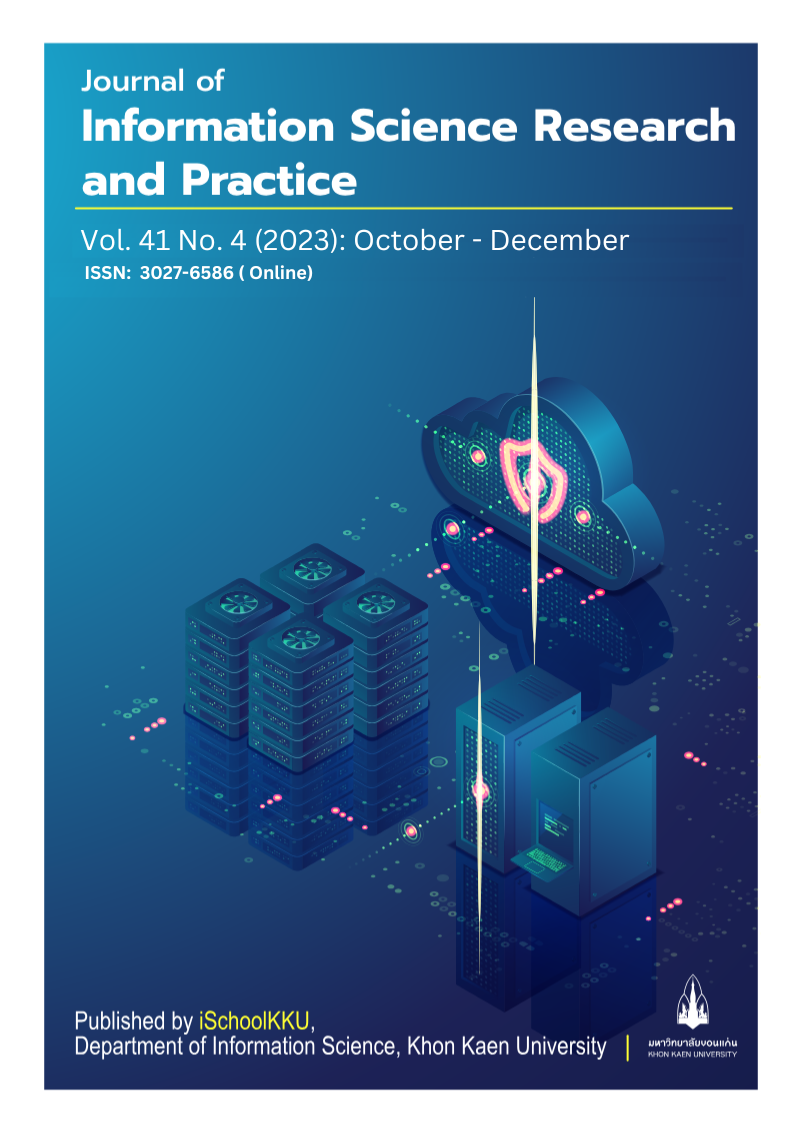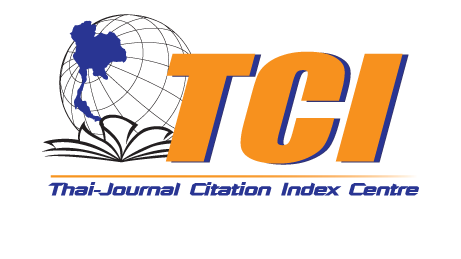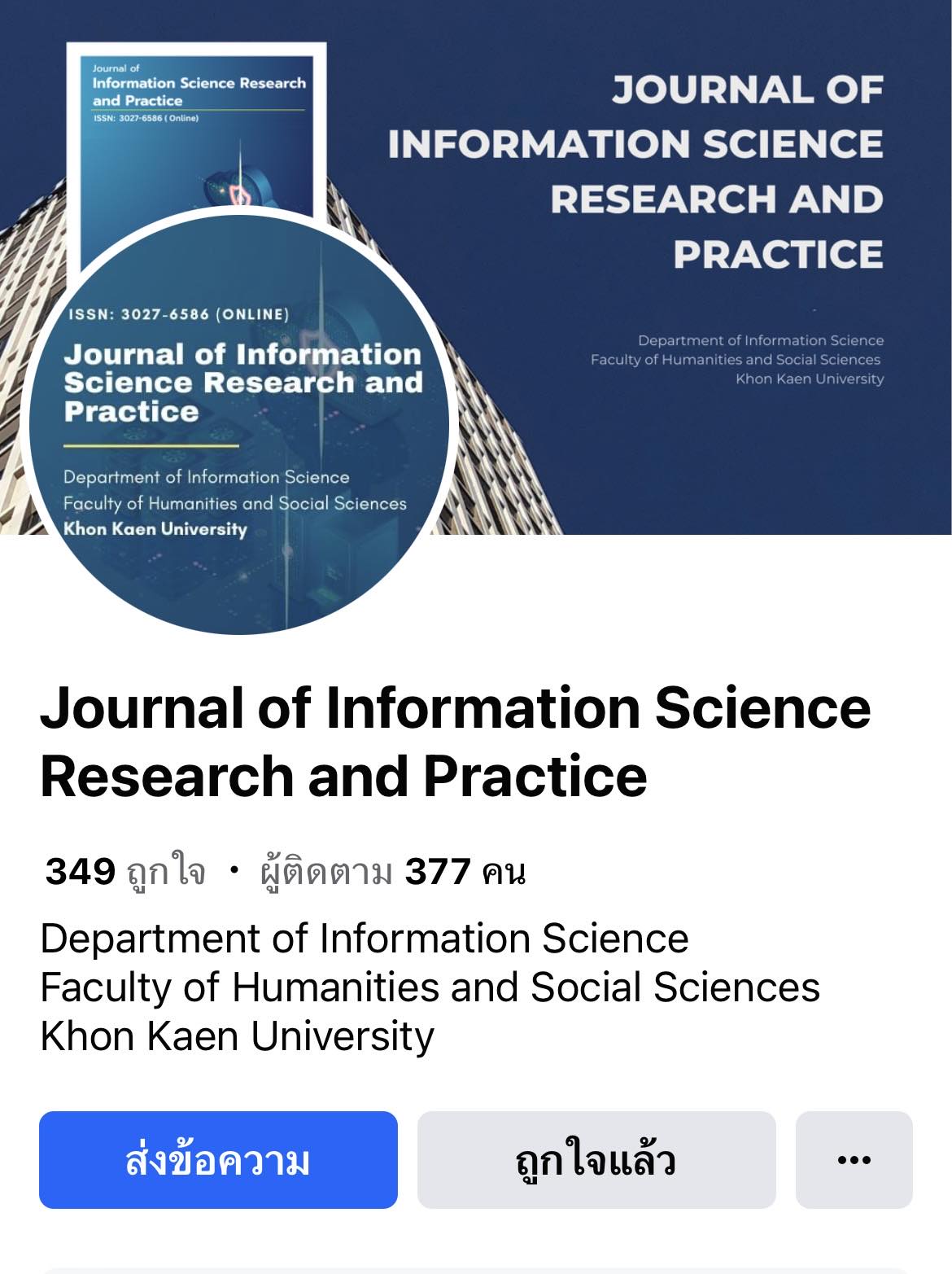Factors Associated with Health Information Exchange: A Literature Review
DOI:
https://doi.org/10.14456/jiskku.2023.31Keywords:
Health Information Exchange , Health data, FactorsAbstract
Purpose: This research aims to study factors associated with health information exchange (HIE), by systematic review.
Methodology: The review is done by searching for research articles in Thai and English. A collection of literature published from 2010 to 2020 was drawn from PubMed, ScienceDirect, SpringerLink, ProQuest, Google Scholar, Tci-Thaijo, and ThaiLIS. Articles were selected to study factors related with health information exchange. Articles were reviewed, analyzed, and coded using a qualitative content analysis approach.
Findings: A total of 748 articles were found from 2010 to 2020. Articles was excluded from duplicate or irrelevant 245 articles, and in the final, there were 18 articles included for review. All are in English. Factors related to and obstacles of HIE include partner readiness, knowledge of health IT, security & privacy, re-designing workflow process, interoperability efforts, information quality of EHRs, IT infrastructure, incentive, policy & governance, HIE adoption & trust, leadership support, cost, and motivation & perceived value.
Application of this Study: Facilitators and barriers of health information exchange could be categorized into 4 domains: policy and governance, organization and network, technology and standards, and users. This study supports the conceptual framework for the development model of health information exchange in Thailand. The factors associated with the success or failure of health information exchange were also included.
Downloads
References
Carr, C. M., Gilman, C. S., Krywko, D. M., Moore, H. E., Walker, B. J., & Saef, S. H. (2014). Observational study and estimate of cost savings from use of a health information exchange in an academic emergency department. The Journal of emergency medicine, 46(2), 250–256. https://doi.org/10.1016/j.jemermed.2013.05.068
Cross, D. A., McCullough, J. S., & Adler-Milstein, J. (2019). Drivers of health information exchange use during postacute care transitions. The American journal of managed care, 25(1), e7–e13.
Dixon, B.E. (2016). Health Information Exchange; Navigating and Managing a Network of Health Information Systems. Academic Press, Oxford, UK.
Downing, N. L., Adler-Milstein, J., Palma, J. P., Lane, S., Eisenberg, M., Sharp, C., Northern California HIE Collaborative, & Longhurst, C. A. (2017). Health information exchange policies of 11 diverse health systems and the associated impact on volume of exchange. Journal of the American Medical Informatics Association, 24(1), 113–122. https://doi.org/10.1093/jamia/ocw063
Dullabh, P., & Hovey, L. (2013). Large scale health information exchange: implementation experiences from five states. Studies in health technology and informatics, 192, 613–617.
Fontaine, P., Ross, S. E., Zink, T., & Schilling, L. M. (2010). Systematic review of health information exchange in primary care practices. Journal of the American Board of Family Medicine, 23(5), 655–670. https://doi.org/10.3122/jabfm.2010.05.090192
Fontaine, P., Zink, T., Boyle, R. G., & Kralewski, J. (2010). Health information exchange: participation by Minnesota primary care practices. Archives of internal medicine, 170(7), 622–629. https://doi.org/10.1001/archinternmed.2010.54
Gadd, C. S., Ho, Y. X., Cala, C. M., Blakemore, D., Chen, Q., Frisse, M. E., & Johnson, K. B. (2011). User perspectives on the usability of a regional health information exchange. Journal of the American Medical Informatics Association, 18(5), 711–716. https://doi.org/10.1136/amiajnl-2011-000281
Hersh, W., Totten, A., Eden, K., Devine, B., Gorman, P., Kassakian, S., Woods, S. S., Daeges, M., Pappas, M., & McDonagh, M. S. (2015). Health Information Exchange. Evidence report/technology assessment, (220), 1–465. doi.org/10.23970/AHRQEPCERTA220
Holen-Rabbersvik, E., Thygesen, E., Eikebrokk, T. R., Fensli, R. W., & Slettebø, Å. (2018). Barriers to exchanging healthcare information in inter-municipal healthcare services: a qualitative case study. BMC medical informatics and decision making, 18(1), 92. https://doi.org/10.1186/s12911-018-0701-z
Kisekka, V., & Giboney, J. S. (2018). The Effectiveness of Health Care Information Technologies: Evaluation of Trust, Security Beliefs, and Privacy as Determinants of Health Care Outcomes. Journal of medical Internet research, 20(4), e107. https://doi.org/10.2196/jmir.9014
Kralewski, J. E., Zink, T., & Boyle, R. (2012). Factors influencing electronic clinical information exchange in small medical group practices. The Journal of rural health, 28(1), 28–33. https://doi.org/10.1111/j.1748-0361.2011.00372.x
McCarthy, D. B., Propp, K., Cohen, A., Sabharwal, R., Schachter, A. A., & Rein, A. L. (2014). Learning from health information exchange technical architecture and implementation in seven beacon communities. EGEMS (Washington, DC), 2(1), 1060. https://doi.org/10.13063/2327-9214.1060
Mäenpää, T., Asikainen, P., Gissler, M., Siponen, K., Maass, M., Saranto, K., & Suominen, T. (2011). Outcomes assessment of the regional health information exchange: a five-year follow-up study. Methods of information in medicine, 50(4), 308–318. https://doi.org/10.3414/ME10-01-0048
Ministry of Public Health (2017). Health Information Technology Strategic Plan Ministry of Public Health (2017-2026), Information and Communication Technology Center, Office of the Permanent Secretary, Ministry of Public Health. Nonthaburi, Thailand.
Ministry of Public Health (2018). Manual for data collection and delivery operations according to the health information standard structure. Strategy and Planning Division, Office of the Permanent Secretary, Ministry of Public Health. Nonthaburi: Thailand.
Overhage, L. M., Covich-Bordenick, J., Li, X., & Overhage, J. M. (2017). Factors Influencing Progress of Health Information Exchange Organizations in the United States. Studies in health technology and informatics, 245, 1236.
Pendergrass, J. C., & Chandrasekaran, R. (2019). Key Factors Affecting Ambulatory Care Providers' Electronic Exchange of Health Information With Affiliated and Unaffiliated Partners: Web-Based Survey Study. JMIR medical informatics, 7(4), e12000. https://doi.org/10.2196/12000
Patel, V., Abramson, E. L., Edwards, A., Malhotra, S., & Kaushal, R. (2011). Physicians' potential use and preferences related to health information exchange. International journal of medical informatics, 80(3), 171–180. https://doi.org/10.1016/j.ijmedinf.2010.11.008
Payne, T. H., Lovis, C., Gutteridge, C., Pagliari, C., Natarajan, S., Yong, C., & Zhao, L. P. (2019). Status of health information exchange: a comparison of six countries. Journal of global health, 9(2), 0204279. https://doi.org/10.7189/jogh.09.020427
Rudin, R., Volk, L., Simon, S., & Bates, D. (2011). What Affects Clinicians' Usage of Health Information Exchange? Applied clinical informatics, 2(3), 250–262. https://doi.org/10.4338/ACI-2011-03-RA-0021
Rudin, R. S., Motala, A., Goldzweig, C. L., & Shekelle, P. G. (2014). Usage and effect of health information exchange: a systematic review. Annals of internal medicine, 161(11), 803–811. https://doi.org/10.7326/M14-0877
Swain, M., Charles, D., Patel, V., Searcy, T. (2015). Health information exchange among U.S. non-federal acute care hospitals: 2008-2014. Washington DC: Office of the National Coordinator for Health Information Technology. ONC Data Brief No. 24.
Unertl, K. M., Johnson, K. B., & Lorenzi, N. M. (2012). Health information exchange technology on the front lines of healthcare: workflow factors and patterns of use. Journal of the American Medical Informatics Association, 19(3), 392–400. https://doi.org/10.1136/amiajnl-2011-000432
Winden, T. J., Boland, L. L., Frey, N. G., Satterlee, P. A., & Hokanson, J. S. (2014). Care everywhere, a point-to-point HIE tool: utilization and impact on patient care in the ED. Applied clinical informatics, 5(2), 388–401. https://doi.org/10.4338/ACI-2013-12-RA-0100
Yeager, V. A., Walker, D., Cole, E., Mora, A. M., & Diana, M. L. (2014). Factors related to health information exchange participation and use. Journal of medical systems, 38(8), 78. https://doi.org/10.1007/s 10916-014-0078-1








